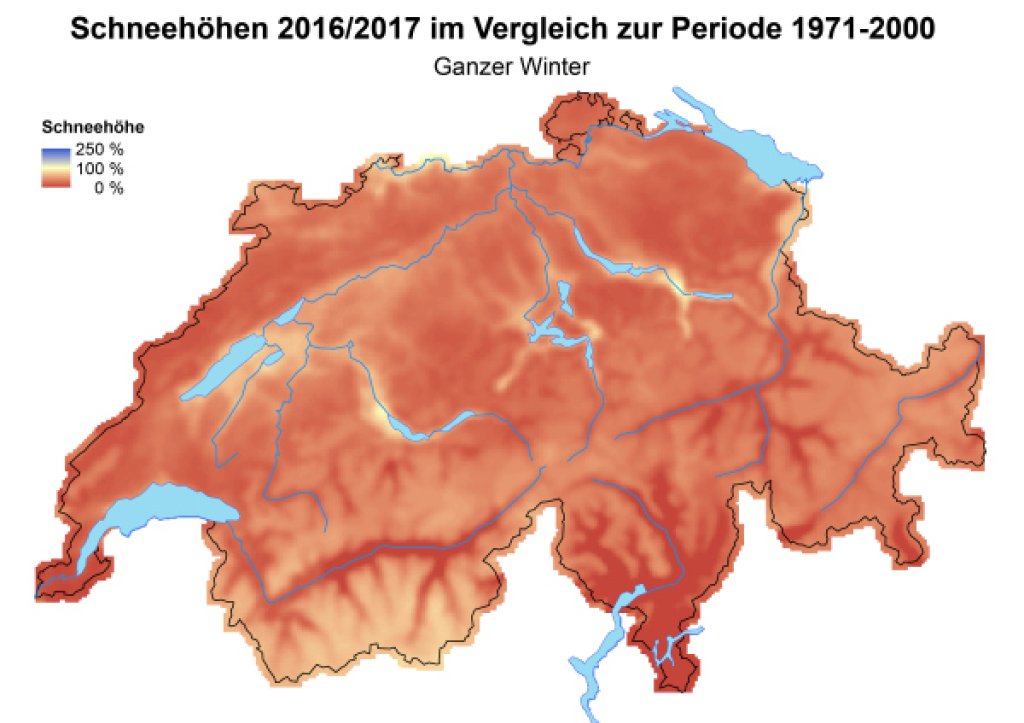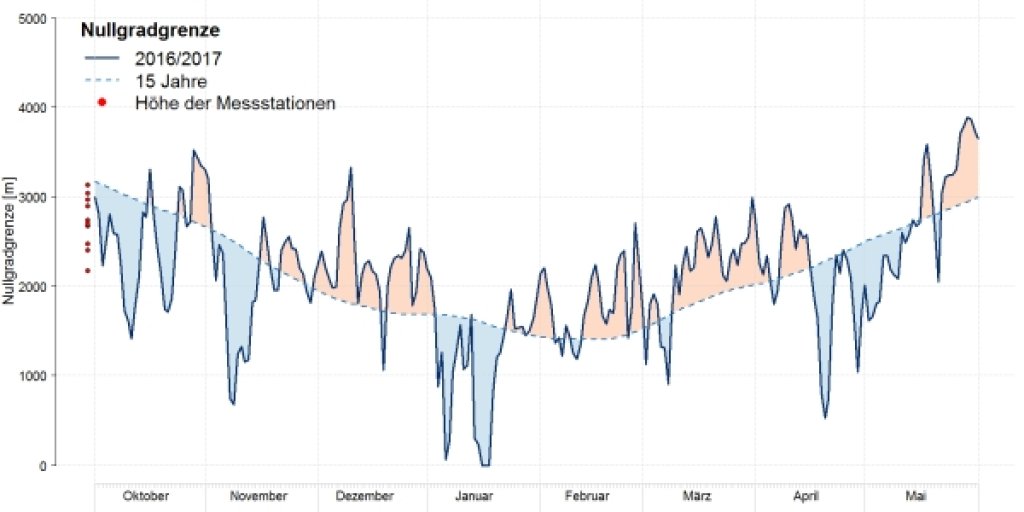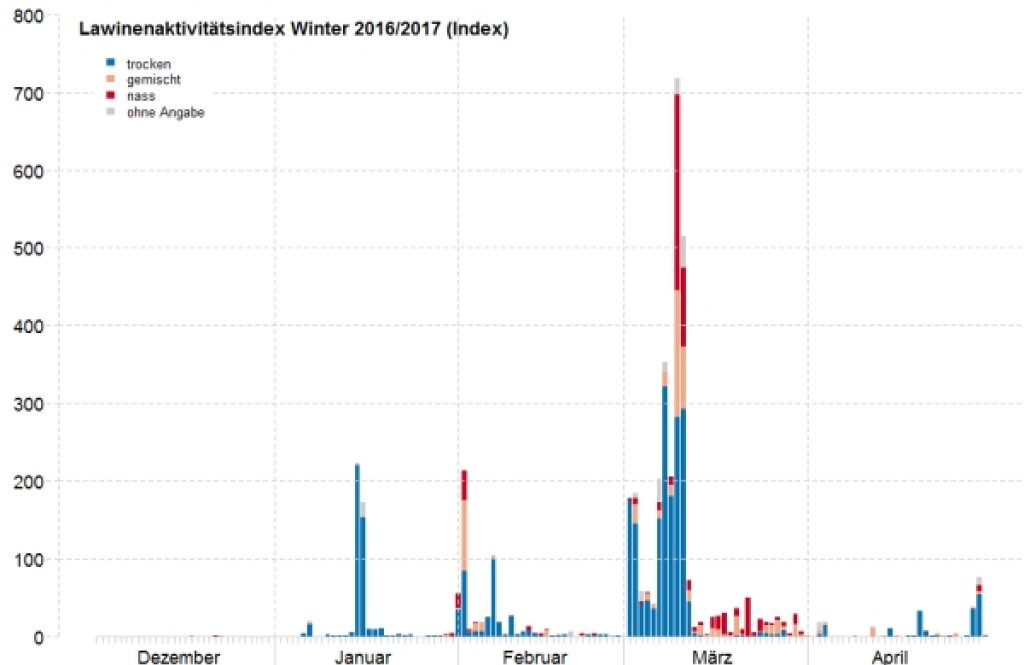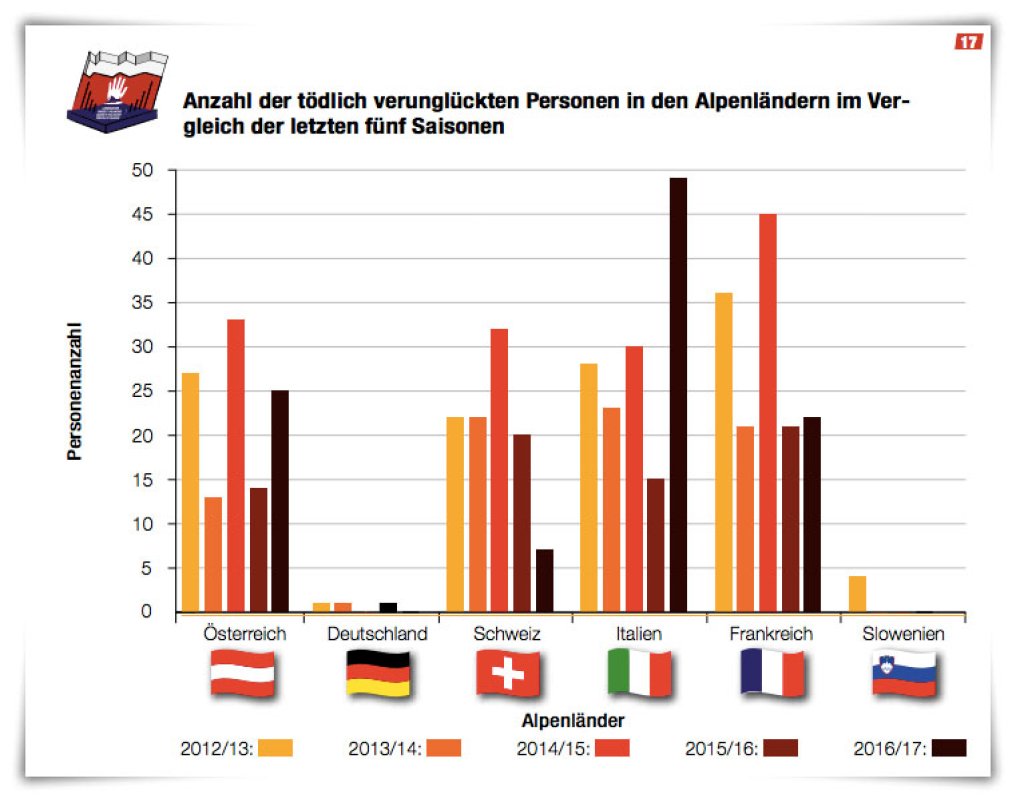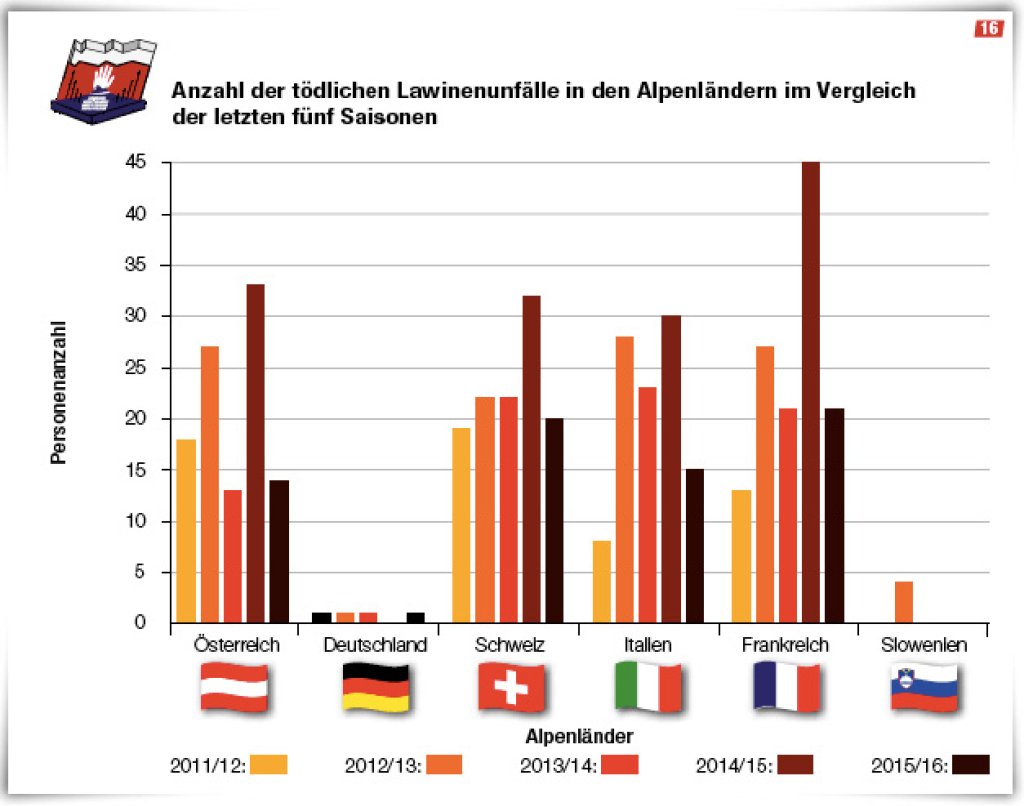Here is the online view, here the pdf. The most important key data is summarized here in the article.
Little snow at the end of the year and little danger of avalanches
The winter got off to a promising start in mid-November with heavy snowfall. However, the snow then melted again below around 2000 m during a foehn phase lasting several days. December was then drier and less snowy than at any time since records began. By the end of the year, there was usually not enough snow for touring and off-piste skiing. Many winter sports resorts experienced a green Christmas for the second time in a row. The widespread thin snow cover varied greatly in structure on a small scale and was often influenced by the wind. There were often several crusts, sometimes it was completely transformed and loose.
Critical avalanche situations for snow sports enthusiasts with fresh snow and weak old snow
In January, repeated snowfall and foehn storms led to critical avalanche situations in the west and north, then from February onwards in the east and south. The danger came mainly from layers of new and drifting snow as well as weak old snow at the base of the snowpack. In the north and west, the weak foundation was soon well covered and could no longer be triggered by people. Especially in southern Upper Valais, northern Ticino, the inner alpine areas of Graubünden, the Engadine and the southern valleys of Graubünden, the weak base layers of the snowpack remained a danger until March due to the thin cover. This was the only weak layer that remained in the snowpack for a long time this winter.
